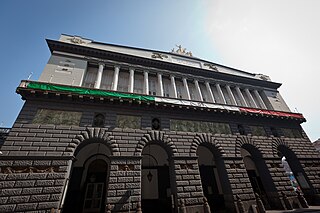
An opera house is a theatre building used for performances of opera. It usually includes a stage, an orchestra pit, audience seating, and backstage facilities for costumes and building sets.

The New Jersey Performing Arts Center (NJPAC), in downtown Newark, New Jersey, United States, is one of the largest performing arts centers in the United States. Home to the New Jersey Symphony Orchestra (NJSO), more than nine million visitors have visited the center since it opened in October 1997 on the site of the former Military Park Hotel.
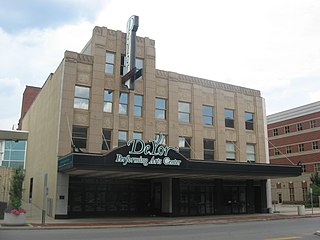
Powers Auditorium, in Youngstown, Ohio is one of the largest auditoriums in the Youngstown-Warren area. The facility is the main venue of downtown Youngstown's DeYor Performing Arts Center. The complex also includes the Adler Art Academy, Beecher Flad Pavilion, and Ford Family Recital Hall. Originally built in 1931 as the Warner Theatre, the former movie palace was renovated and reopened as Powers Auditorium in 1969.

The National Centre for the Performing Arts (NCPA) is a multi-venue, multi-purpose cultural centre in Mumbai, India, which aims to promote and preserve India's heritage of music, dance, theatre, film, literature and photography. It also presents new and innovative work in the performing arts field.
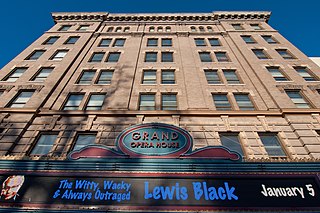
The Grand Opera House, often called The Grand and originally known as the Academy of Music, is a historic opera house located in Macon, Georgia, United States. Listed on the National Register of Historic Places in 1970, it is now the performing arts center of Mercer University.

Boller Brothers, often written Boller Bros., was an architectural firm based in Kansas City, Missouri which specialized in theater design in the Midwestern United States during the first half of the 20th century. Carl Heinrich Boller (1868–1946) and Robert Otto Boller (1887–1962) are credited with the design of almost 100 classic theaters ranging from small vaudeville venues to grand movie palaces.
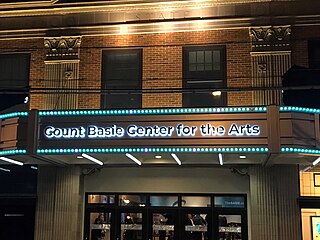
The Count Basie Center for the Arts is a landmarked performing arts center in Red Bank, Monmouth County, New Jersey, United States.
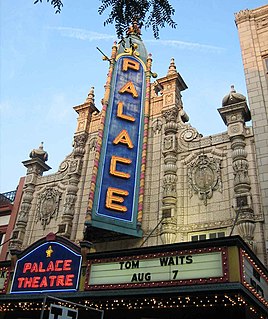
The performing arts community in Louisville, Kentucky is undergoing a renaissance. The Kentucky Center, dedicated in 1983, located in the downtown hotel and entertainment district, is a premiere performing arts center. It features a variety of plays and concerts, and is the performance home of the Louisville Ballet, Louisville Orchestra, Broadway Across America - Louisville, Music Theatre Louisville, Stage One, KentuckyShow! and the Kentucky Opera, which is the twelfth oldest opera in the United States. The center also manages the historic W. L. Lyons Brown Theatre, which opened in 1925 and is patterned after New York's acclaimed Music Box Theatre.

The Orpheum Theatre, a 2,308-seat venue listed on the National Register of Historic Places, is located in downtown Memphis, Tennessee, on the southwest corner of the intersection of South Main and Beale streets. The Orpheum, along with the Halloran Centre for Performing Arts & Education, compose the Orpheum Theatre Group, a community-supported nonprofit corporation that operates and maintains the venues and presents education programs.

Heinz Hall is a performing arts center and concert hall located at 600 Penn Avenue in the Cultural District of Pittsburgh, Pennsylvania. Home to the Pittsburgh Symphony Orchestra (PSO) and the Pittsburgh Youth Symphony Orchestra, the 2,676 seat hall presents about 200 performances each year. Originally built in 1927 as Loew's Penn Theatre, the former movie palace was renovated and reopened as Heinz Hall in 1971.
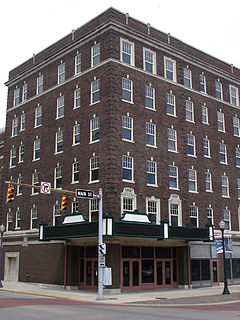
The Victory Theatre is a 1,950 seat venue in Evansville, Indiana. It is home to the Evansville Philharmonic Orchestra and also hosts local ballet and modern dance companies, theatre companies, and touring productions.

The Missouri Theatre, is a concert and entertainment venue in downtown Columbia, Missouri, occupying most of a city block between 9th street between Locust and Elm Streets. It was designed after the Opéra Garnier by the Boller Brothers, built in 1928, and is on the National Register of Historic Places. It is Columbia's only surviving pre-Depression movie palace and vaudeville stage. In 2011, the University of Missouri began a three-year lease of the facility. The Missouri Theatre is the resident home of the Missouri Symphony Orchestra, and is also frequently used by University of Missouri and civic groups. As of July 1, 2014, The University of Missouri took over ownership of the Missouri Theatre. It is one of the main performance venues for the University of Missouri School of Music.

Veterans Memorial Auditorium is a performing arts theater in Providence, Rhode Island. Construction began in 1928 but was delayed by the Great Depression. The theater was finally completed in 1950. The adjacent Performing Arts Complex was erected in 1970 and is partially owned by the Veterans' Memorial Foundation.

The Victoria Theatre is a historic 1,154-seat performing arts venue located in downtown Dayton, Ohio. The Victoria presents traveling broadway shows, concerts and other theatrical productions such as The Phantom of the Opera.

The Colonial Theater is a historic theater in Idaho Falls, Idaho, founded in 1919 as a venue for live performances. From 1929 until 1990, it operated as a movie theater under the name The Paramount Theater. In the 1990s, the theater was renovated, and its original name was restored. It is currently part of the Willard Arts Center arts complex, owned and operated by the Idaho Falls Art Council.

The Mahalia Jackson Theater of the Performing Arts is a theater located in Louis Armstrong Park in New Orleans, Louisiana. It was named after gospel singer Mahalia Jackson, who was born in New Orleans. The theater reopened in January 2009, after being closed since the landfall of Hurricane Katrina.

The Lincoln Theatre is a 582-seat performing arts venue located at 769 E. Long Street in the King-Lincoln Bronzeville neighborhood of Columbus, Ohio. The theater is owned by the City of Columbus under the auspices of the Lincoln Theatre Association. Operation of the facility is managed by CAPA. It was listed on the National Register of Historic Places in 1992.

New York City Center is a 2,257-seat Moorish Revival theater at 131 West 55th Street between Sixth and Seventh Avenues in Midtown Manhattan, New York City, one block south of Carnegie Hall. City Center is a performing home for several major dance companies as well as the Encores! musical theater series and the Fall for Dance Festival. The facility houses the 2,257 seat main stage, two smaller theaters, four studios and a 12-story office tower.
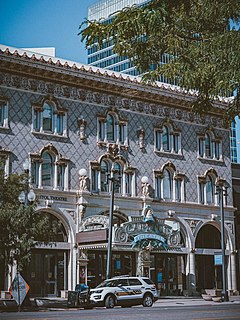
The historic Capitol Theatre was built at 50 West 200 South in downtown Salt Lake City in 1913. Originally operated as a vaudeville house named Orpheum Theater, it was renamed Capitol Theater in 1927. It is also known currently as the JQ Lawson Capitol Theater. The building style is Italian Renaissance.




















